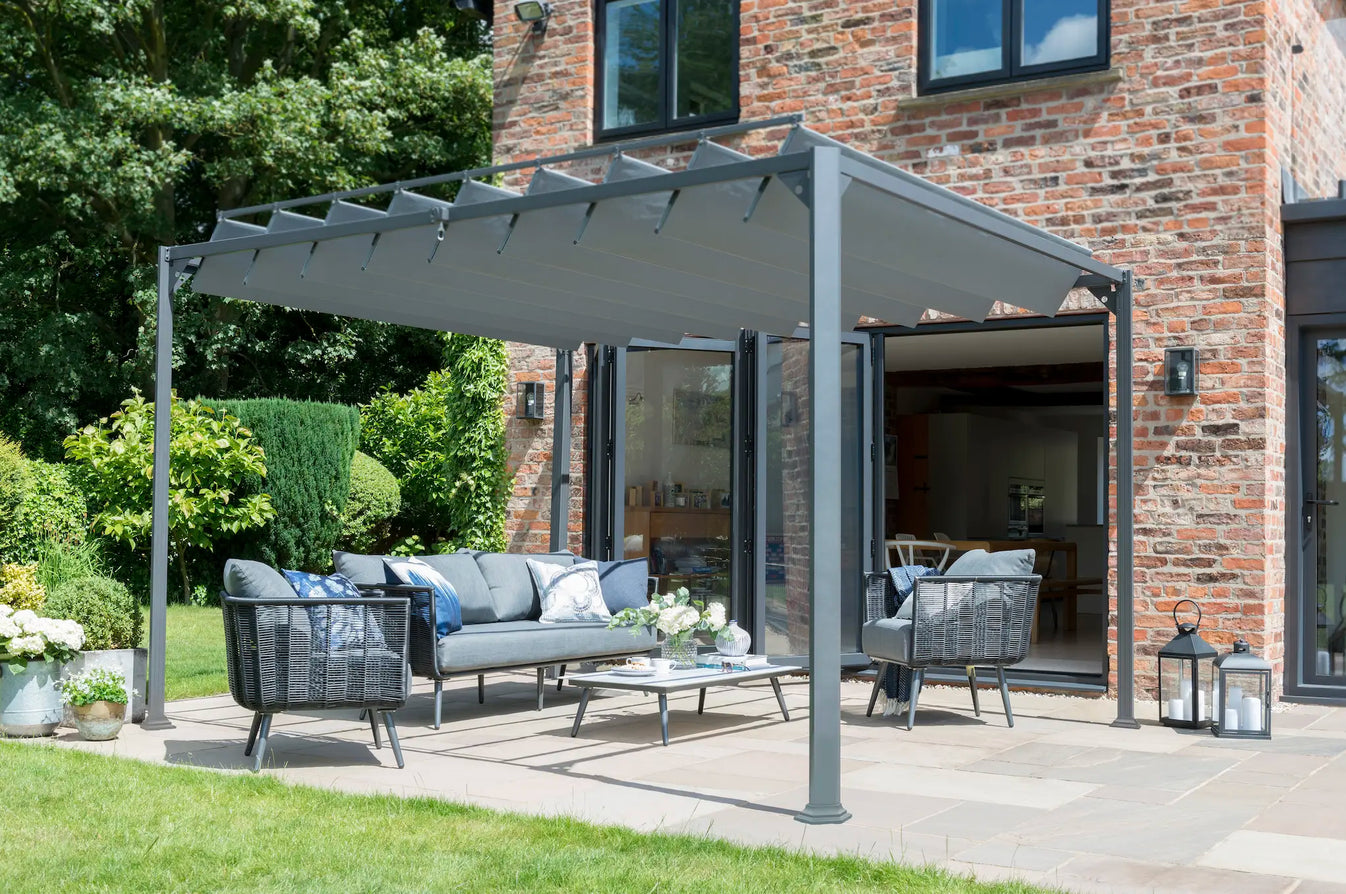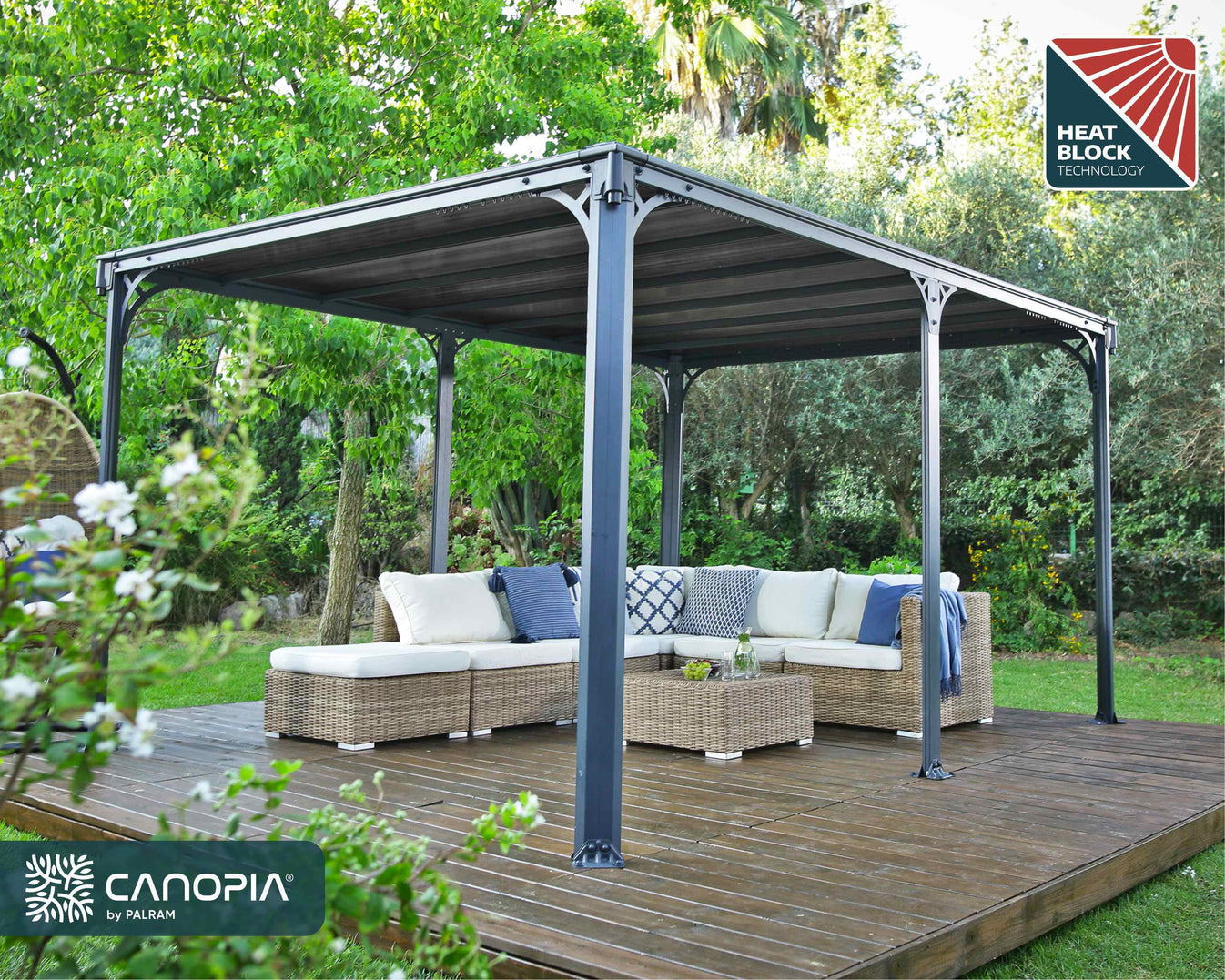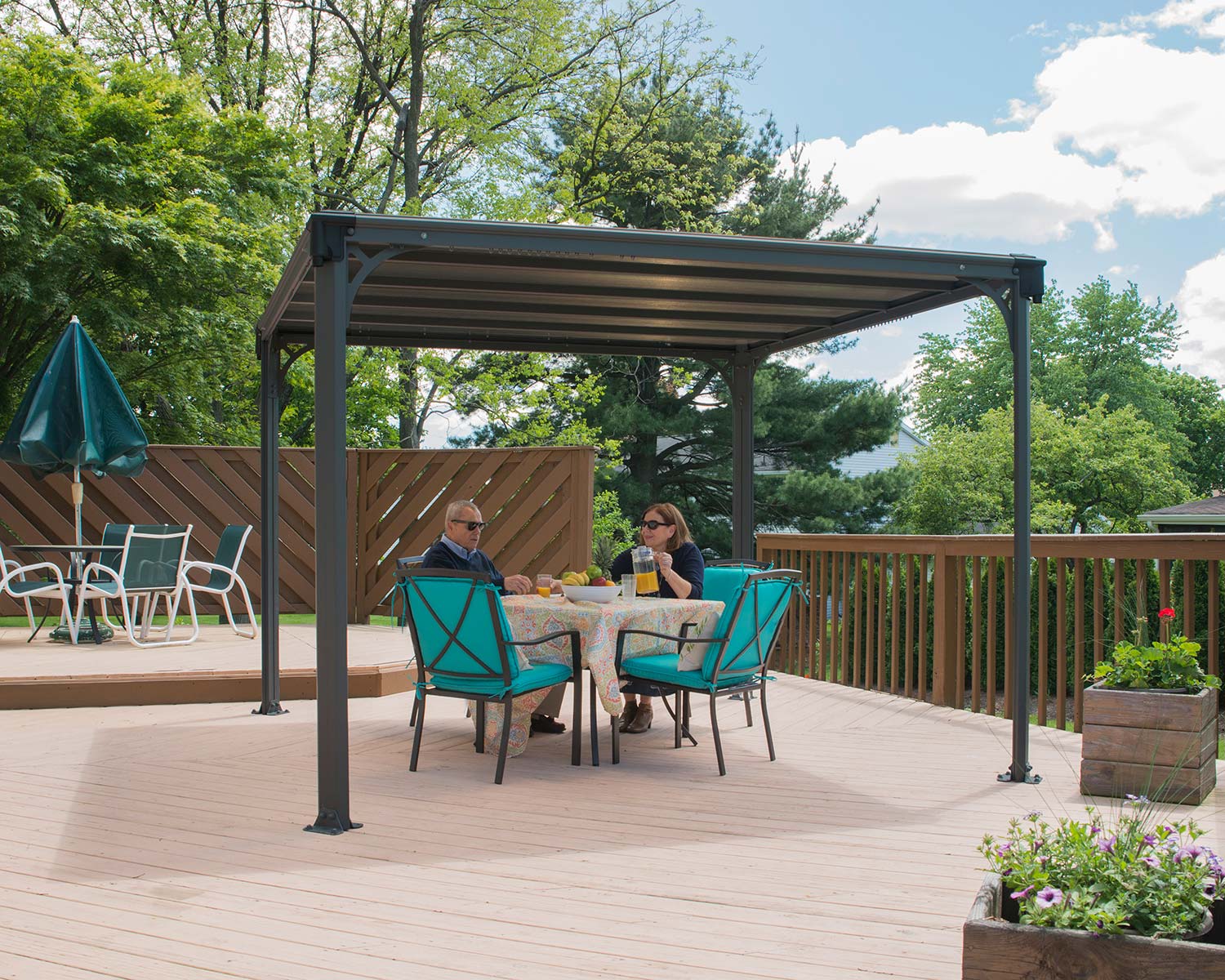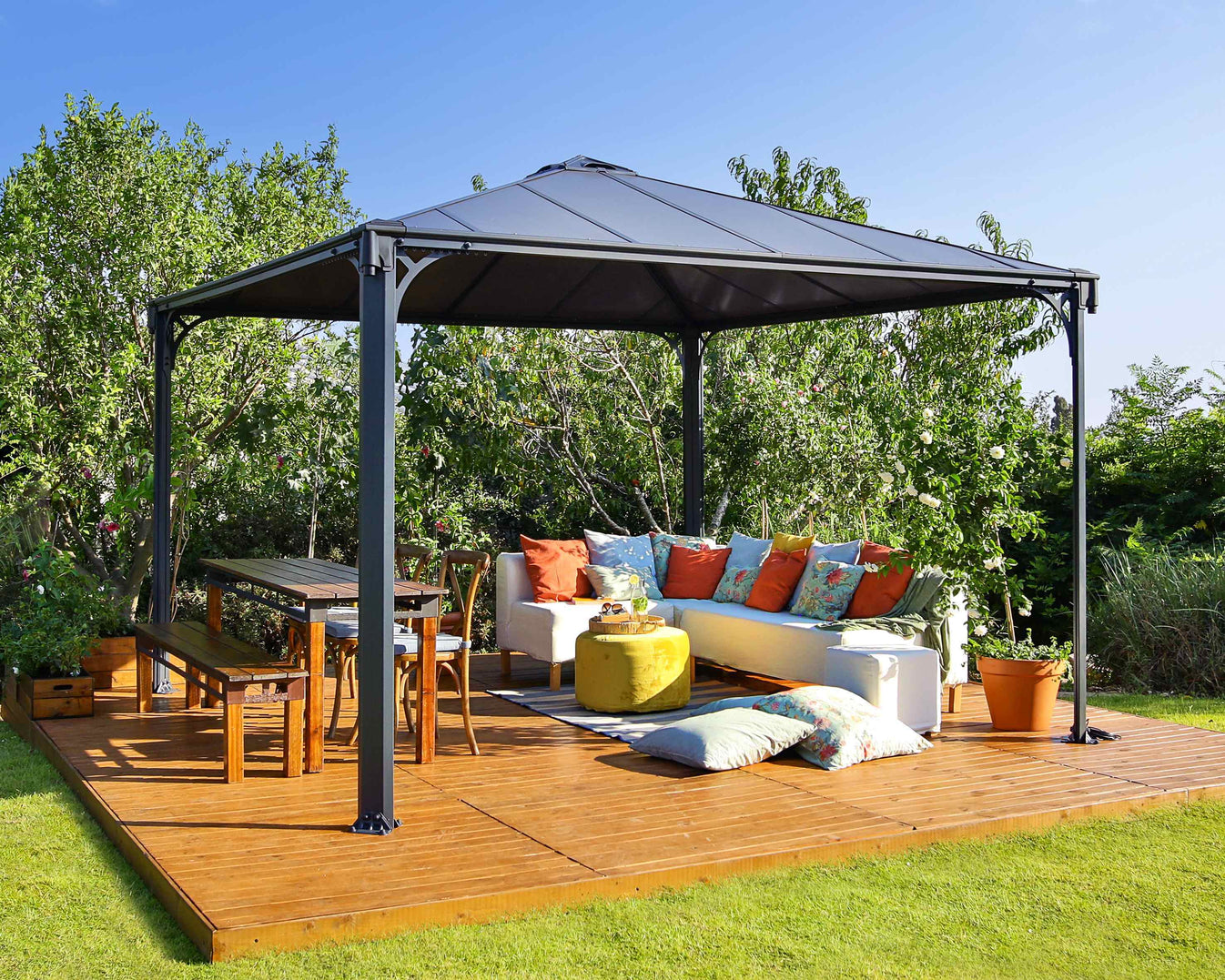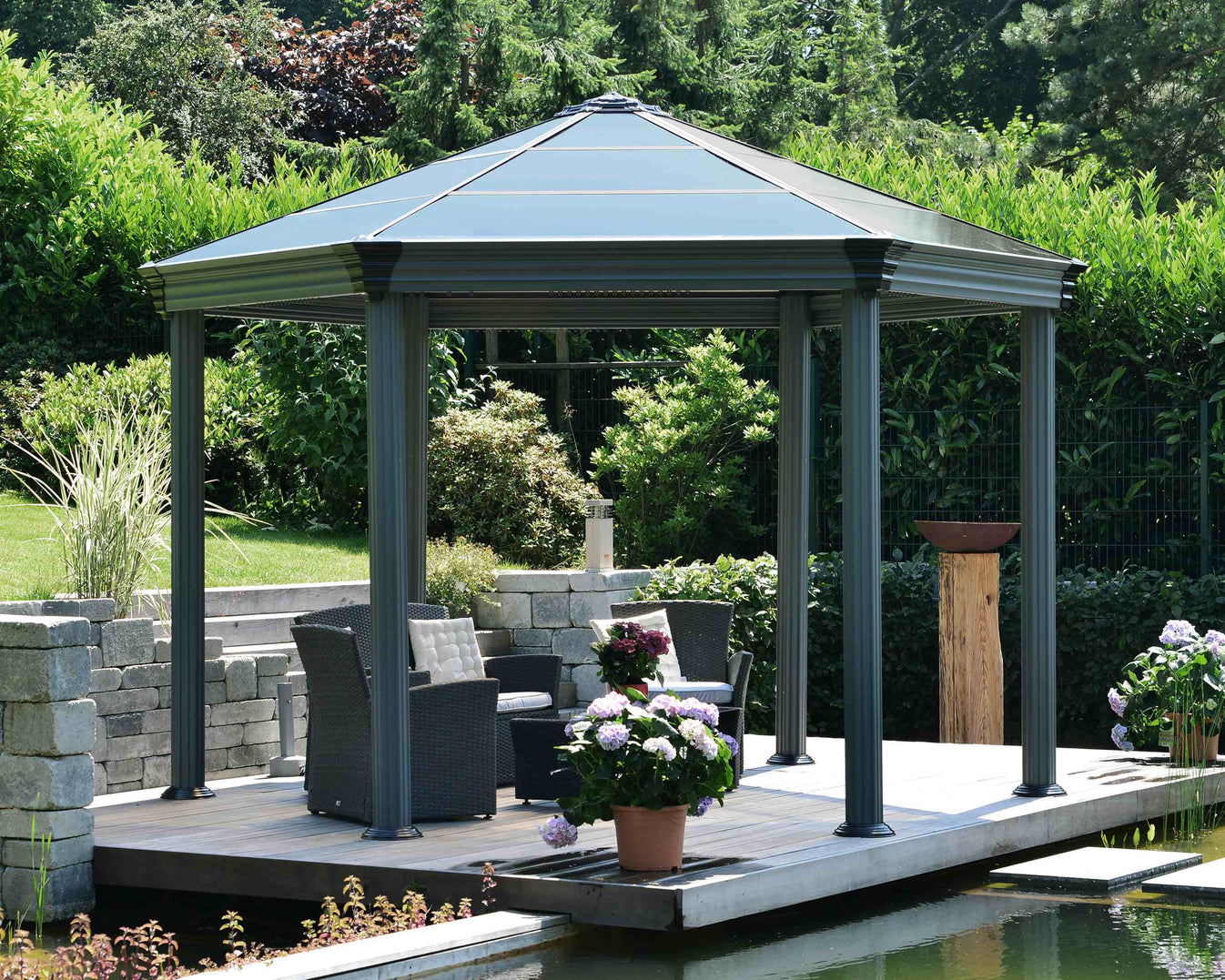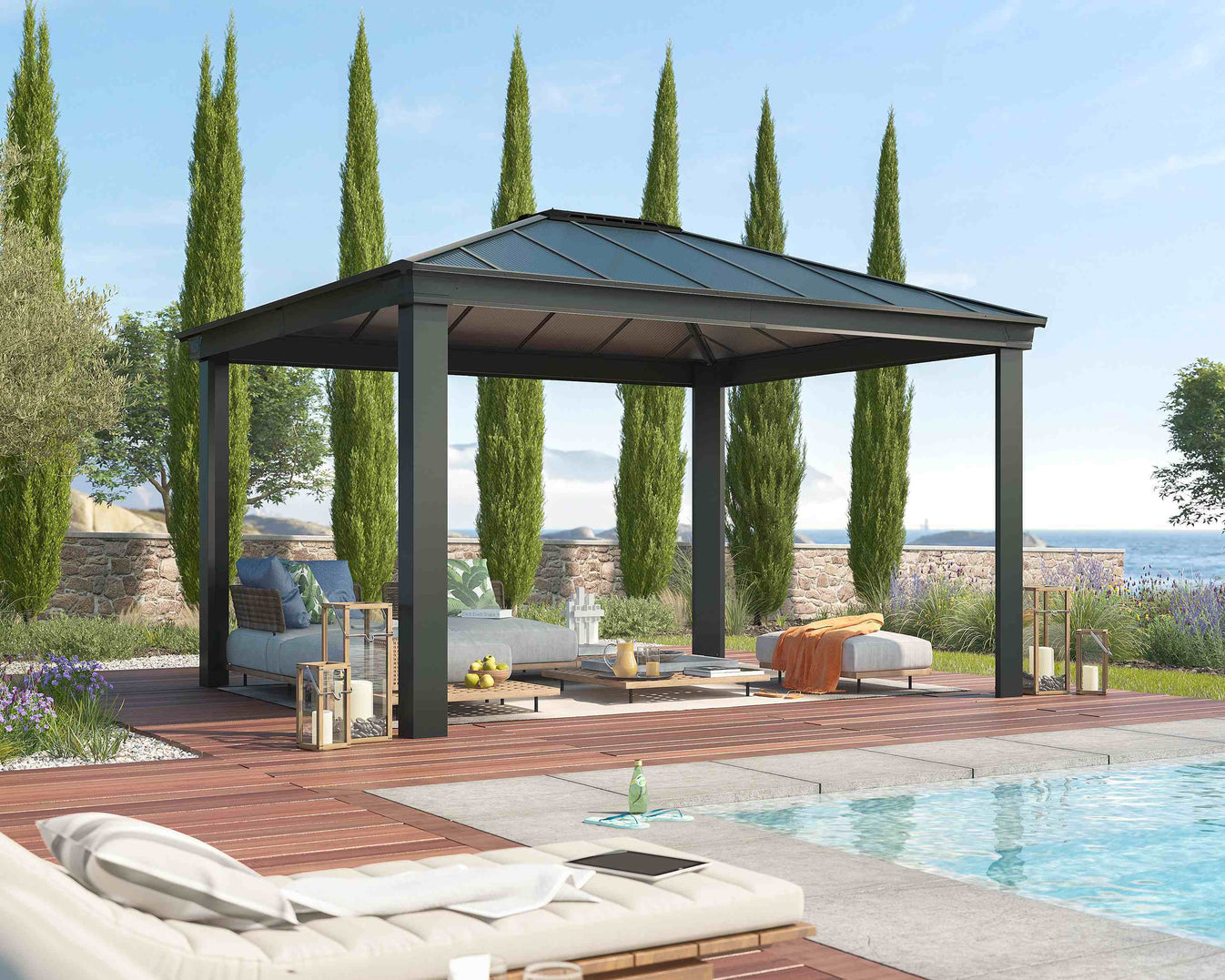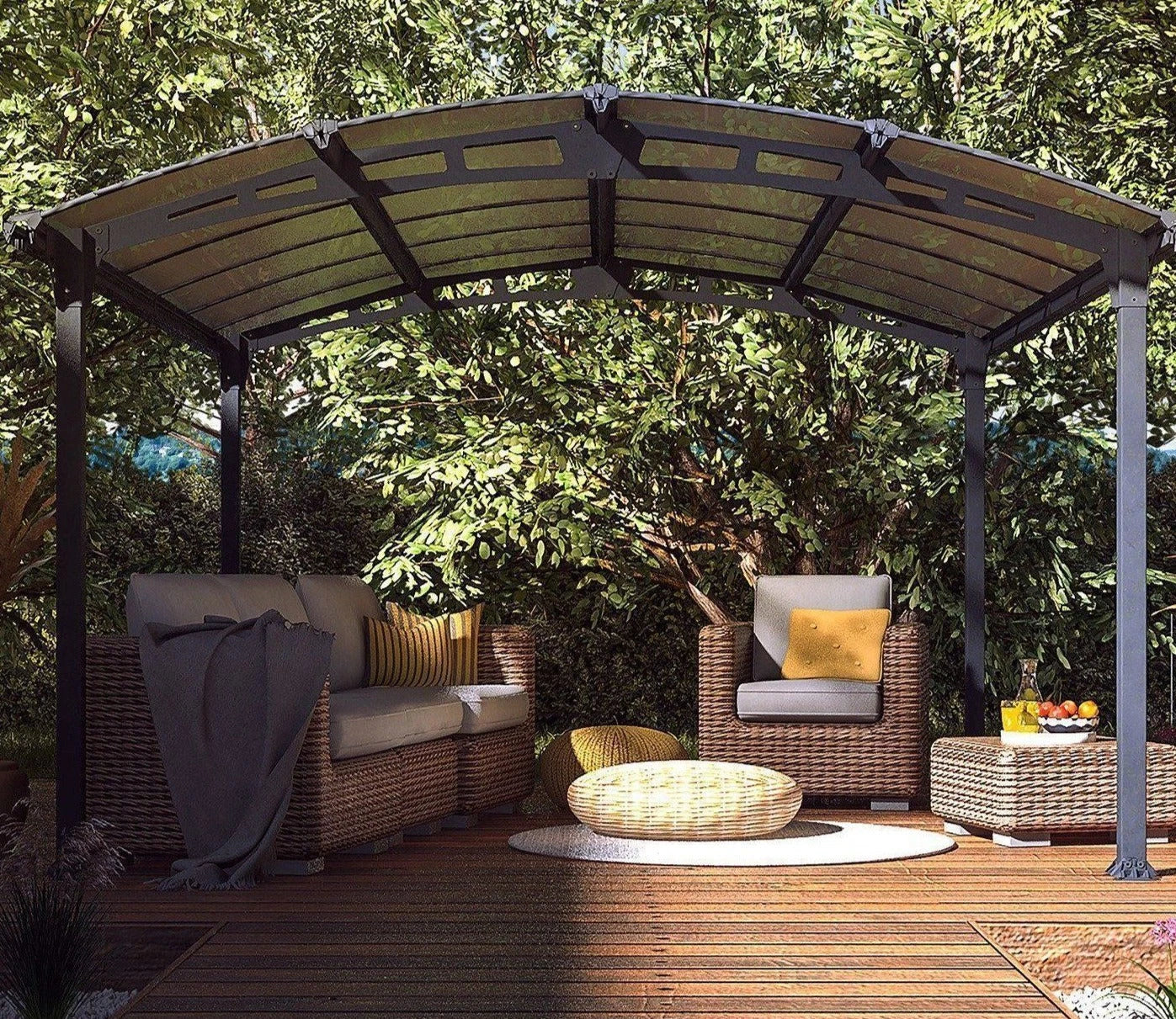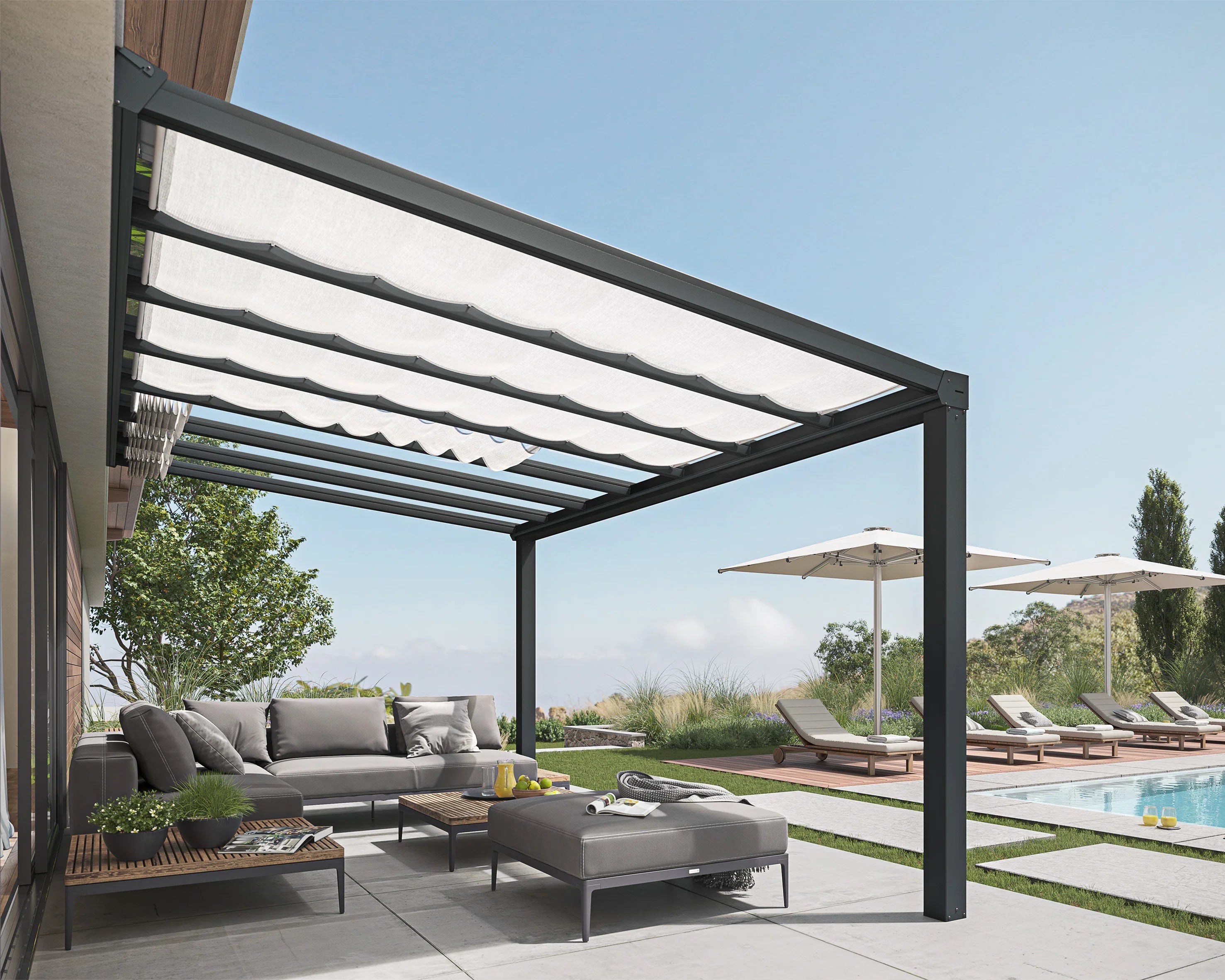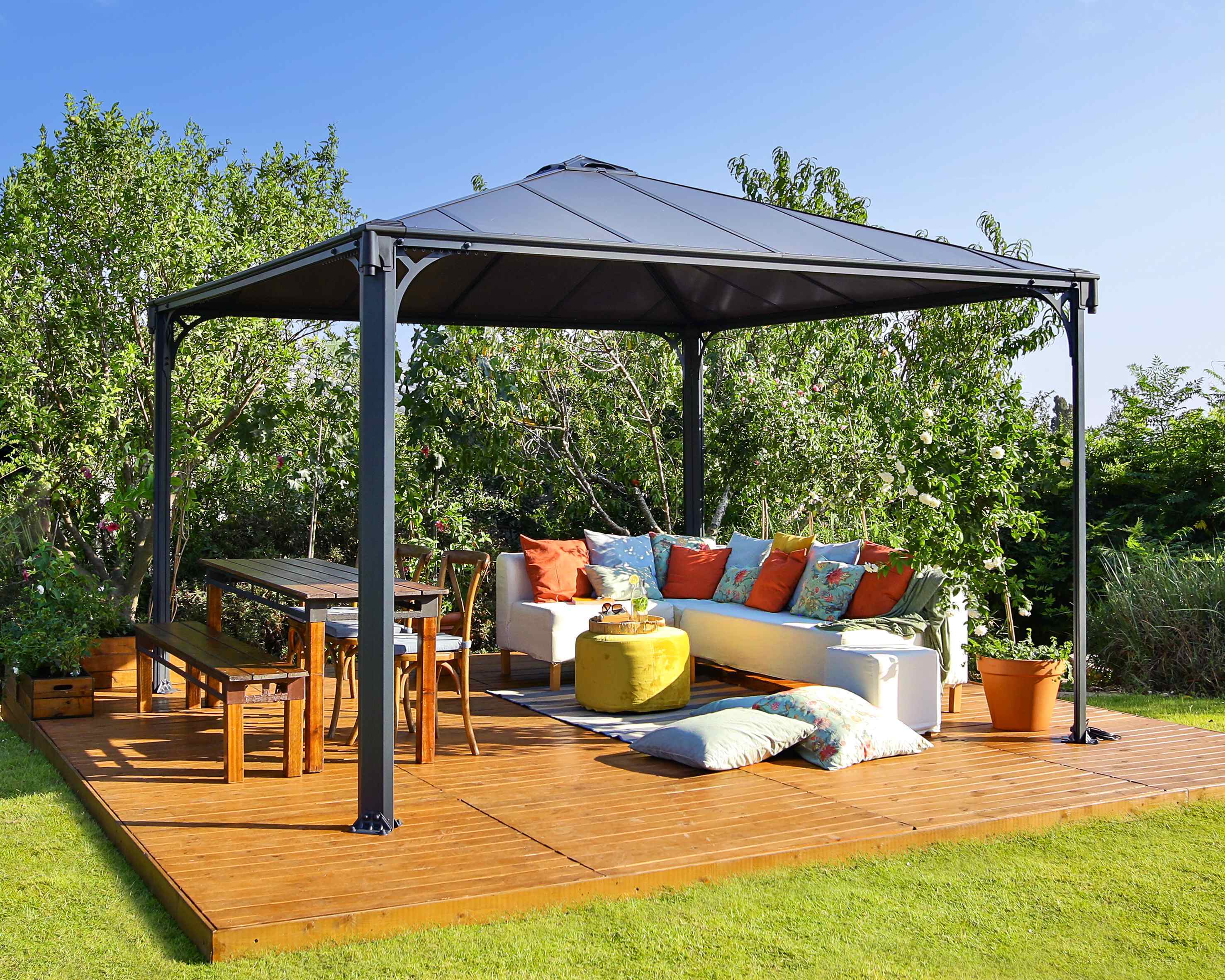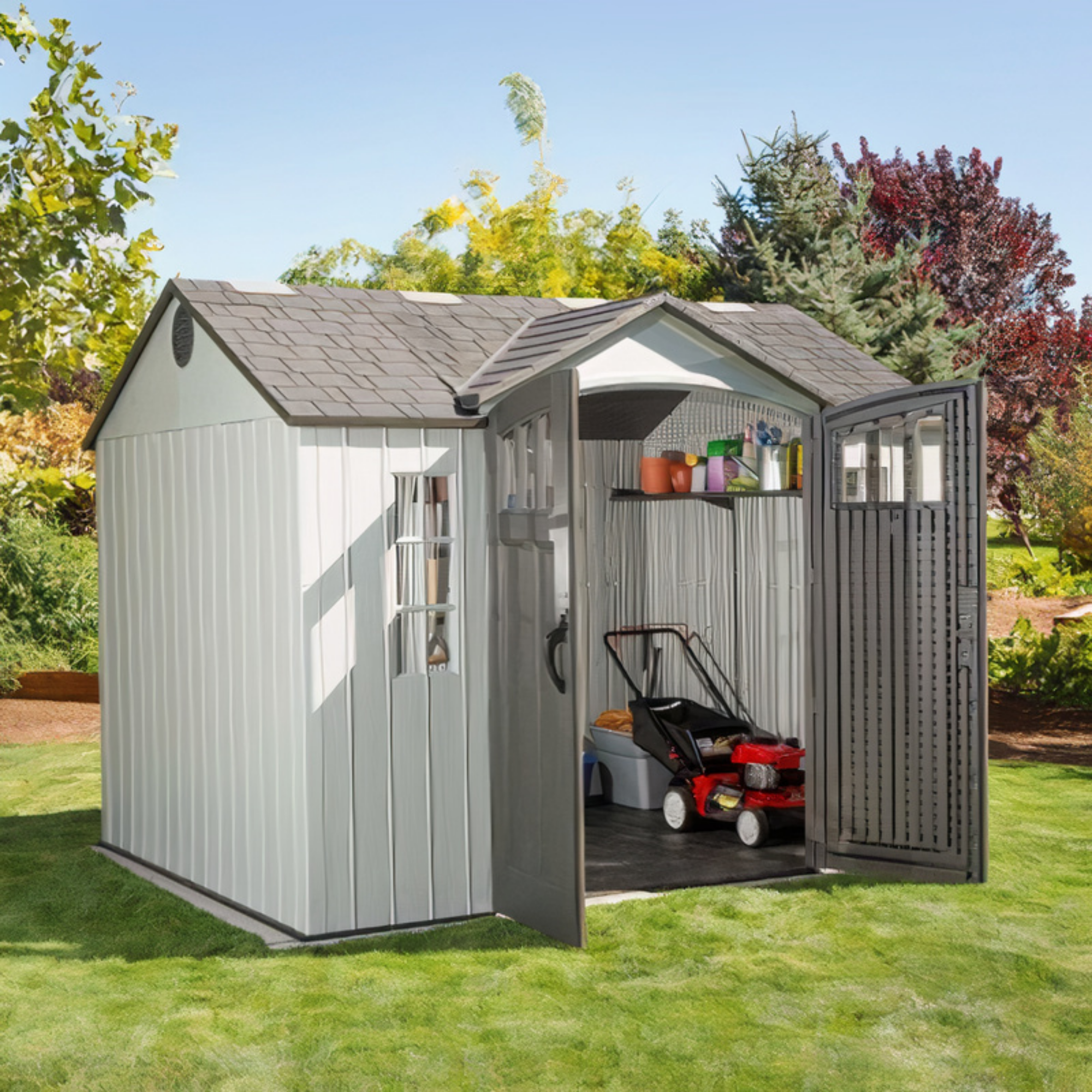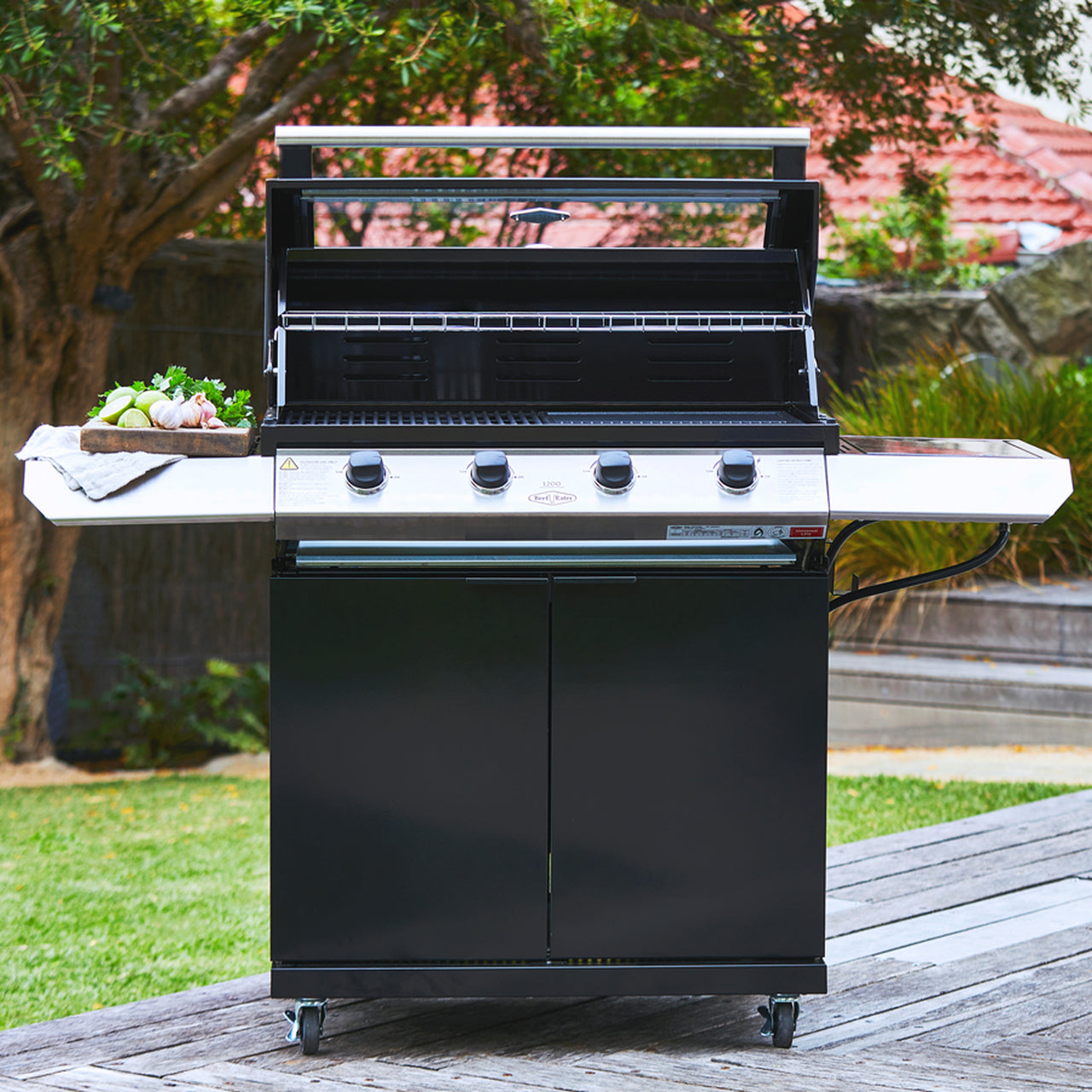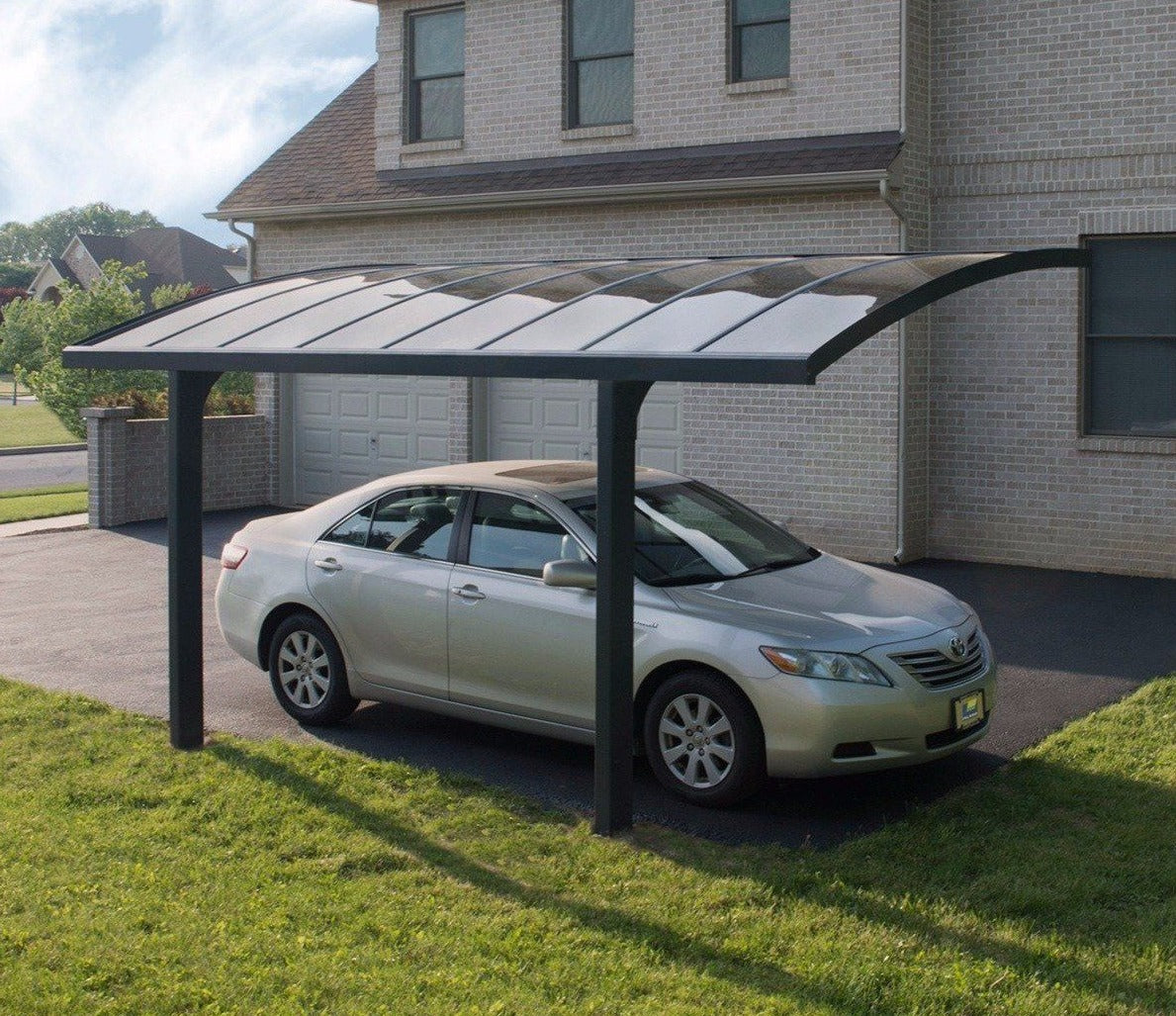5 Essential Tips When Choosing a Metal Aluminium Pergola for Your UK Garden

If you've been researching pergolas, you've probably noticed the overwhelming number of options available. Steel or aluminium? Fixed roof or adjustable? What size actually fits your garden without making it look cramped? And honestly, will it survive the next winter storm? These are the questions keeping you up at night when you should be dreaming about how brilliant your outdoor space could be.
This guide breaks down five essential tips that'll help you choose the perfect aluminium pergola for your UK garden. We'll cover everything from weather resistance to installation, size considerations to style choices, so you can make a decision you'll feel confident about for years to come. Let's get started.
Understanding the Difference Between Steel and Aluminium Pergolas
Before you even start browsing pergolas for sale, you need to understand what you're actually looking at. The material choice between steel or aluminium isn't just about aesthetics, it fundamentally affects how your pergola performs in our unpredictable British climate.
Steel pergolas are undeniably strong. They've got that solid, heavyweight feel that makes you think they could withstand anything. And to be fair, they can handle significant loads and wind pressure. But here's where things get tricky: steel's biggest weakness is its relationship with moisture. Without proper protection, steel will rust. Even with high quality powder coating, any chips or scratches expose the metal underneath to the elements, and once rust starts, it spreads.
Aluminium pergolas, on the other hand, behave completely differently. The material is naturally corrosion resistant because it forms a protective oxide layer when exposed to air. This means even if the surface gets scratched, the aluminium underneath won't rust the way steel does. You're looking at a pergola that genuinely doesn't care about our damp climate.
Weight is another massive consideration. Aluminium pergolas are significantly lighter than steel structures, which affects everything from installation to the foundation requirements. A lighter pergola doesn't need as substantial a base, and if you're installing it yourself, you won't need half the neighbourhood to help you lift the components into place.
The durability question often comes up here. People assume lighter means weaker, but modern aluminium pergolas are engineered to be incredibly strong whilst remaining lightweight. The structural integrity comes from the design and the quality of the aluminium alloy used, not just the raw weight of the material.
Powder coating adds an extra layer of protection to both steel and aluminium pergolas, but it's more critical for steel. With aluminium, the powder coating is primarily about aesthetics and adding UV resistance, because the metal itself already handles moisture brilliantly. For steel, it's essential protection against rust and corrosion.
When you're comparing options, think about the long-term picture. An aluminium pergola might cost a bit more initially than a basic steel option, but you're saving on maintenance, replacement parts, and the headache of dealing with rust patches five years down the line. In the UK's climate, where we can experience four seasons in a single afternoon, that corrosion resistance is worth its weight in gold.
Tip 1: Prioritise Weather Resistance and Durability
Let's be honest about British weather for a minute. We've got rain that appears from nowhere, winds that'll knock over your garden furniture, summer heatwaves that nobody's prepared for, and winters that range from mild drizzle to actual snow. Your outdoor space needs to handle all of it without falling apart or looking shabby within a year.
Weather resistance isn't just a "nice to have" feature, it's the foundation of choosing a pergola that'll actually last. An aluminium pergola gives you that baseline protection right from the start. The material doesn't absorb moisture, won't warp or crack like wood, and genuinely shrugs off the kind of weather that destroys other garden structures.
But durability goes beyond just the frame material. You need to look at how the entire pergola is constructed. Check the thickness of the aluminium profiles, the quality of the joints, and how the structure is designed to handle wind loads. A well-designed aluminium pergola will have reinforced corners, secure fixings, and a frame that distributes stress evenly across the structure.
UV protection is something people often overlook until their outdoor furniture starts fading. Quality aluminium pergolas come with roof materials that block harmful UV rays whilst still letting light through. This matters for your comfort, for protecting any furniture underneath, and for the longevity of the pergola itself.
The roof material plays a huge role in overall durability. Polycarbonate panels are brilliant because they're virtually unbreakable, they block UV rays, and they handle temperature fluctuations without cracking. Some pergolas feature louvered roofs with adjustable slats, which give you control over ventilation and rain protection.
Think about wind resistance specifically. British gardens can experience surprisingly strong gusts, especially if you're in an exposed area. The Pandora Leaf Gazebo Pergola features an innovative wind lever mechanism that helps secure the structure during windy conditions. This kind of thoughtful engineering makes the difference between a pergola that lasts decades and one that needs constant attention.
What Makes Aluminium Pergolas Weather Resistant?
Aluminium's natural properties are pretty remarkable when you dig into the science. The moment aluminium is exposed to oxygen, it forms a thin oxide layer on its surface. This layer is incredibly stable and actually protects the metal underneath from further oxidation. Unlike iron oxide (rust), which flakes off and exposes fresh metal to corrosion, aluminium oxide sticks tight and self-heals if scratched.
This means your aluminium pergola is essentially maintenance-free when it comes to rust prevention. You don't need to repaint it every few years or worry about rust spots appearing after a particularly wet winter. A quick wash with soapy water once or twice a year is honestly all the maintenance most aluminium pergolas need.
Powder coating on aluminium pergolas serves a dual purpose. It provides that sleek, modern finish in various colours (usually grey or anthracite for contemporary gardens), and it adds an extra protective barrier against the elements. The powder coating process creates a finish that's more durable than traditional paint, resistant to chipping, scratching, and fading from UV exposure.
In British weather conditions, you can expect a quality aluminium pergola to last 20-30 years or more without significant deterioration. Compare that to wooden pergolas that need treating every 1-2 years and may rot within a decade, or steel pergolas that can start showing rust within 5-10 years despite protective coatings.
Temperature fluctuations don't phase aluminium either. The material expands and contracts minimally with temperature changes, which means joints stay tight and the structure maintains its integrity through freezing winters and hot summers. This thermal stability is particularly valuable in the UK, where we can experience a 20-degree temperature swing within a week.
Tip 2: Consider Your Outdoor Space Dimensions and Layout
Right, let's talk about something that trips up loads of people: choosing a pergola that actually fits their garden properly. It's not just about whether it physically fits in the space, it's about proportion, functionality, and how you'll actually use the area underneath.
Start by measuring your outdoor space accurately. And I mean really measuring it, not just eyeballing it. You need the length and width of where you want the pergola to sit, but also consider the height clearance. Most aluminium pergolas stand around 2.2 to 2.4 metres tall, which is comfortable for most people, but if you've got particularly tall family members or you want to hang plants or lights, you might want extra headroom.
Think about what you want to do under your pergola. Are you creating a dining area? You'll need space for a table, chairs, and room for people to move around comfortably. For a typical six-person dining setup, you're looking at needing at least 3x3 metres, realistically 3.6x3.6 metres is more comfortable. Planning a lounge area with sofas and a coffee table? Similar sizing applies.
Don't forget about clearance around the pergola. You want to be able to walk around it easily, and you don't want it butting right up against fences or walls unless that's specifically part of the design. A good rule of thumb is to leave at least 60-80cm of clear space on sides you'll be walking past.
Planning permission is worth a quick mention here. In England, pergolas are usually considered permitted development and don't require planning permission, but there are exceptions. If your pergola is over 4 metres tall, extends beyond the rear wall of your house by more than 3 metres (4 metres for detached houses), or covers more than half your garden, you might need permission. If you're in a conservation area or your property is listed, definitely check with your local planning authority first.
Matching Aluminium Pergola Size to Garden Scale
Small gardens need careful consideration. You don't want a pergola that overwhelms the space and makes your garden feel cramped. A 3x3 metre pergola works brilliantly for compact patios and smaller gardens. It's large enough to be functional without dominating the entire outdoor area.
The Pandora Leaf Gazebo at 3x3 metres provides enough coverage for a small dining table and chairs or a cosy seating area. The adjustable roof slats let you control how much shade and shelter you get, which is particularly useful in smaller spaces where every square metre counts. You can open the slats on pleasant days to let light flood in, or close them when you need protection from rain or intense sun.
Medium-sized gardens offer more flexibility. Here, you can consider pergolas in the 4 to 4.3 metre range without overwhelming your outdoor space. These sizes let you create distinct zones, perhaps a covered dining area that still leaves plenty of open garden for other activities.
The Milano 4300 Aluminium Grey Gazebo hits that sweet spot for medium gardens. The rust-resistant aluminium construction and shatterproof polycarbonate roof panels give you year-round protection, whilst the Heat Block Technology keeps the space comfortable even during summer heatwaves. This size accommodates a generous dining table with space for 6-8 people comfortably, or a proper outdoor lounge setup with multiple seating areas.
Large gardens give you the freedom to go bigger. Pergolas in the 5 to 6 metre range create impressive outdoor living spaces that can handle serious entertaining.
For spacious gardens, the Dallas 6100 Aluminium Gazebo offers proper coverage for extensive outdoor living. You could fit a full dining setup, a separate lounge area, and still have room to move around comfortably. The pre-drilled profiles and pre-cut panels make assembly straightforward despite the size, and the weather-resistant design means you can use this space throughout the year.
Layout flexibility matters too. Think about sight lines from your house, how the sun moves across your garden, and where you naturally gravitate when you're outside. Your pergola should enhance how you use your outdoor space, not fight against your natural patterns.
Tip 3: Choose the Right Roof Style for Your Needs
The roof is arguably the most important part of your aluminium pergola. It determines how much protection you get, how much light filters through, and honestly, how much you'll actually use the space throughout the year. Get this decision right and you'll be out there in all sorts of weather. Get it wrong and your pergola becomes a fair-weather structure that sits unused most of the year.
There are three main roof types you'll encounter when shopping for aluminium pergolas: louvered roofs with adjustable slats, fixed polycarbonate panel roofs, and solid panel roofs. Each serves different purposes and suits different lifestyles.
The climate in your specific area should influence this choice too. If you're in a particularly rainy region, a roof that provides solid protection matters more than if you're in a drier area. If you get intense sun during summer, UV protection and heat management become priorities.
Ventilation is something people don't think about until they're sitting under a pergola on a warm day feeling uncomfortably stuffy. Good roof design includes airflow considerations. Some roofs have built-in ventilation gaps, others rely on adjustable elements to let hot air escape whilst still providing shelter.
Louvered Roofs for Maximum Flexibility
Louvered roofs are brilliant if you want control. The adjustable slats rotate to let you choose exactly how much shade, light, and protection you want at any given moment. On a pleasant morning, open them fully to enjoy the sunshine. When rain threatens, close them to create a watertight seal. It's like having multiple pergolas in one.
The slats typically rotate from fully open (horizontal position letting maximum light through) to fully closed (overlapping to shed water). Some systems use a manual wind lever to adjust the slats, others come with motorised controls. The manual systems work perfectly well and they're more affordable, but motorised versions add convenience if you're adjusting them frequently.
Light control with louvered roofs is genuinely impressive. You can fine-tune the amount of shade throughout the day as the sun moves across the sky. Early morning coffee with gentle dappled light filtering through? Lovely. Midday lunch when you need more shade? Close the slats partially. Evening drinks under the stars? Open them completely.
When it rains, properly designed louvered systems channel water away efficiently. The slats overlap when closed, creating a weathertight barrier that sheds rain to integrated guttering. You stay dry underneath whilst still having the option to open up when the weather clears.
The Pandora Leaf pergolas mentioned earlier use this louvered system brilliantly. The adjustable slats give you that flexibility to adapt to changing weather conditions throughout the day, which is exactly what you need in British weather where conditions change constantly.
Polycarbonate Roofs for Year-Round Protection
Polycarbonate roofs take a different approach. Instead of adjustable slats, you get fixed panels that provide consistent protection. The material is incredibly tough, virtually shatterproof, and it blocks harmful UV rays whilst still letting light through.
UV blocking is a massive benefit. Quality polycarbonate can block up to 99% of UV rays, which protects you from sun damage and prevents your outdoor furniture from fading. You get the brightness of natural light without the harmful effects of direct sun exposure.
Weather protection with polycarbonate roofs is comprehensive. Rain, snow, hail, it all bounces off the panels without causing damage. Unlike glass, polycarbonate won't shatter if a branch falls on it during a storm. It's genuinely built for the worst weather conditions.
Light transmission varies depending on the polycarbonate type. Clear panels let through maximum light, creating a bright, airy feel underneath. Tinted or frosted panels reduce glare and heat whilst still providing plenty of illumination. Some modern polycarbonate panels feature heat block technology that reflects infrared radiation, keeping the space underneath noticeably cooler on hot days.
The Tucson 5000 Aluminium Grey Gazebo showcases how effective polycarbonate roofing can be. The weather resistant design handles everything British weather throws at it, whilst the modern aesthetics fit beautifully into contemporary gardens. This type of roof means you can genuinely use your outdoor space year round, not just during the occasional sunny week in July.
The minimal maintenance aspect of polycarbonate roofs is another selling point. A quick rinse with a hose once or twice a year keeps them clean. No special treatments, no worrying about deterioration. They just work, year after year.
Tip 4: Factor in the Ease of Installation and Assembly
Here's something that often gets overlooked until you're standing in your garden surrounded by pergola components wondering what you've got yourself into: installation matters. A lot. The difference between a straightforward assembly and a weekend-destroying nightmare often comes down to how well the pergola is designed for installation.
Modern aluminium pergolas are generally designed for DIY installation, but "DIY-friendly" covers a pretty wide spectrum. Some pergolas arrive with pre-cut components, pre-drilled holes, and instructions so clear you could probably assemble them half asleep. Others require more skill, patience, and possibly some creative problem-solving.
Time investment varies significantly based on pergola size and design complexity. A smaller 3x3 metre pergola with a straightforward design might take two reasonably handy people 4-6 hours to assemble. Larger structures or those with more complex roof systems could easily stretch to a full day or even a weekend project.
The tools required are usually pretty standard: spirit level, adjustable spanner, screwdrivers (often provided), possibly a drill for securing to your base. Most quality pergolas don't require specialist tools, which is reassuring if you're not running a fully equipped workshop.
Foundation requirements matter before you even think about assembling the frame. Aluminium pergolas need a solid, level base. This usually means a concrete patio, paving slabs, or a purpose-built concrete base. The base needs to be completely level, you can't fudge this. If your intended site isn't level, you'll need to sort that first, which might mean hiring professionals for ground preparation even if you're assembling the pergola yourself.
Two-person assembly is standard for most pergolas. You could theoretically do it alone, but honestly, it's frustrating and unnecessarily difficult. Having someone to hold components whilst you secure fixings, to help lift roof panels into place, and to double-check alignment makes the whole process significantly more pleasant.
What to Look for in Easy Assembly Pergolas
Pre-drilled components are your friend. When every hole is already drilled precisely where it needs to be, assembly becomes straightforward. You're just aligning holes and inserting fixings, not measuring, marking, and drilling yourself whilst trying to hold heavy aluminium profiles in position.
Ready-drilled components also ensure accuracy. The manufacturer has done the precise measuring, so components fit together properly without adjustment. This matters for structural integrity and for the finished appearance.
Clear instruction manuals separate good manufacturers from average ones. Look for instructions with detailed diagrams, step-by-step photos, and clear written explanations. Bonus points if they include a parts list with everything labelled, so you can identify components easily.
Some pergolas come with pre-assembled sections that reduce on-site assembly time. The main frame might arrive as large pre-built panels that you just need to connect, rather than assembling from individual profiles. This speeds up installation significantly.
The Milano 3000 Aluminium Grey Gazebo exemplifies user-friendly design. The ready-drilled components and straightforward assembly process mean you can have this pergola up and ready to use within a day. The rust-resistant aluminium construction doesn't just make it durable, the lightweight nature of aluminium compared to steel makes handling and positioning components much easier during assembly.
Professional installation is always an option if DIY isn't your thing or if you simply don't have the time. Many garden centres and pergola suppliers offer installation services. Yes, it adds to the cost, but you get the peace of mind that it's assembled correctly and securely. For larger or more complex pergolas, professional installation might actually be the sensible choice.
The installation process shouldn't be the deciding factor in choosing your pergola, but it's definitely worth considering. If two pergolas meet your other requirements equally well, and one is significantly easier to install, that's a valid tiebreaker.
Tip 5: Balance Style with Functionality
Your pergola is going to be a prominent feature in your garden, so it needs to look right. But here's the thing, style shouldn't come at the expense of functionality. The best aluminium pergolas manage to be both beautiful and incredibly practical.
Design aesthetics have come a long way from the basic pergolas of years past. Modern metal pergolas embrace clean lines, minimalist profiles, and contemporary finishes. The sleek appearance of aluminium lends itself perfectly to modern garden design, where simplicity and quality materials take centre stage.
How the pergola complements your existing architecture matters more than you might think. If you've got a modern house with large windows and clean lines, a contemporary aluminium pergola with a minimalist design makes perfect sense. The grey or anthracite finishes popular on aluminium pergolas coordinate beautifully with modern building materials.
That said, aluminium pergolas can work in more traditional settings too. The key is choosing a design that doesn't clash. A simple, elegant pergola in a neutral colour can sit comfortably in a cottage garden or alongside a period property. It's when you try to force overly modern or fussy designs into the wrong setting that things look awkward.
Colour and finish options are usually limited with aluminium pergolas, and honestly, that's fine. The standard grey or anthracite finishes are popular because they work. They're neutral enough to fit various garden styles, they don't show dirt easily, and they coordinate with most outdoor furniture and accessories.
Additional features turn a basic pergola into a proper outdoor living space. Integrated guttering systems channel rainwater away neatly instead of creating waterfalls at the corners. Some pergolas have mounting points for outdoor heaters, which extend the usable season significantly. Lighting integration, either built-in or with easy mounting options, lets you use the space comfortably in the evenings.
Modern vs Traditional Aesthetics
Sleek aluminium structures scream contemporary design. The material's clean profiles and smooth finishes work brilliantly in modern gardens. Think geometric paving, minimalist planting, and architectural outdoor furniture. An aluminium pergola becomes the structural focal point that ties everything together.
Metal pergolas suit different garden styles better than you might expect. Contemporary gardens are the obvious fit, but they can work in transitional spaces that blend modern and traditional elements. The key is keeping the design simple and letting the quality of the materials speak for themselves.
In more rustic or traditional settings, aluminium pergolas require careful selection. You want simpler designs without overly modern detailing. The structure should provide function, shelter and shade, without drawing too much attention to itself. Sometimes in traditional gardens, the pergola works best as a subtle framework that supports climbing plants rather than a bold architectural statement.
Colour Considerations
Colour considerations are straightforward with aluminium. Grey and anthracite are the standard finishes, and they work because they're genuinely neutral. They don't compete with your planting, they coordinate with stone paving, decking, and brick, and they provide a sophisticated backdrop for outdoor furniture.
Enhancing Functionality with Smart Features
Integrated guttering might not sound exciting, but it makes a massive practical difference. Proper guttering systems channel rainwater away from the pergola and away from where people sit. No more water pooling at the corners, no more unexpected waterfalls when you open the door during rain. Some systems even let you collect rainwater for garden use.
Heater compatibility extends your outdoor living season considerably. Being able to mount a patio heater or install heating strips lets you use your pergola comfortably well into autumn and even winter. Combined with the shelter provided by the roof, heating turns your pergola into a genuine year-round space.
Lighting integration creates ambience and functionality. Built-in LED strips, mounting points for pendant lights, or even just convenient places to hang string lights make the space usable after dark. There's something brilliant about sitting under your pergola on a summer evening with gentle lighting creating atmosphere.
The Palermo 3600 Aluminium Grey Gazebo balances style and function particularly well. The modern design looks sharp, whilst the spacious interior accommodates various furniture arrangements. The integrated ventilation keeps air flowing, which prevents that stuffy feeling on warm days. The shatterproof polycarbonate roof provides serious weather protection whilst maintaining a sleek aesthetic.
Side panels and screening options add versatility. Retractable side screens provide privacy, wind protection, or shade as needed. Some people add climbing plants to create a living wall effect. Others install removable panels that provide winter wind protection but can be removed in summer for maximum airflow.
If you want something a bit different stylistically, the Roma Hexagonal Aluminium Grey Gazebo offers distinctive aesthetic appeal. The hexagonal shape provides a traditional gazebo silhouette executed in modern materials. It's an interesting middle ground between classic and contemporary that works in various garden settings. The spacious interior and weather-resistant construction mean you're not sacrificing function for unique style.
Creating cohesive outdoor living zones is about more than just the pergola itself. Think about how the covered space relates to the rest of your garden. Does it create a natural gathering point? Does it connect smoothly with paths or patio areas? The best outdoor spaces flow naturally, with the pergola anchoring a functional zone without feeling disconnected from the rest of the garden.
Making Your Final Decision: Comparing Metal Aluminium Pergolas for Different Needs
Right, you've absorbed all this information about materials, sizes, roof types, installation, and style. Now comes the actual decision. How do you compare different aluminium pergolas and choose the one that's genuinely right for your situation?
Start by revisiting the five tips in the context of your specific needs. Weather resistance and durability are non-negotiable in UK gardens, so any pergola you're seriously considering should tick those boxes. From there, your outdoor space dimensions narrow down the size options. The roof style depends on how you want to use the space and how much control you want over light and weather protection. Installation considerations might eliminate options that are too complex for DIY if that's important to you. And style should align with your garden aesthetic and your personal preferences.
Budget obviously plays a role. Aluminium pergolas range from around £750 for compact models to over £3,000 for large, feature-rich options. But here's the thing about budget, cheaper isn't always better value. A well-built aluminium pergola that lasts 25 years with minimal maintenance represents better value than a budget option that needs replacing or significant repairs within 10 years.
Features matter more for some people than others. If you'll genuinely use adjustable louvered slats regularly, they're worth paying for. If you know you'll heat the space in cooler months, heater compatibility becomes important. If you're happy with a straightforward covered area, you don't need to pay for features you won't use.
Maintenance requirements should factor into your decision too. One of the brilliant things about quality aluminium pergolas is how little maintenance they need. An occasional wash keeps them looking good. No annual treatments, no rust repairs, no replacing rotted components. This low maintenance aspect represents both time saved and long-term cost savings.
Warranty coverage gives you insight into manufacturer confidence. Better quality pergolas typically come with longer warranties because the manufacturers know their products will last. Check what's actually covered, some warranties cover structural components but exclude things like polycarbonate panels or moving parts.
The Dallas 4300 Aluminium Gazebo represents a solid middle-ground option that balances quality, features, and value. The weather-resistant construction and UV protection provide the durability UK gardens require. The easy assembly means you can realistically install it yourself. And the size works for many typical garden situations. It's the kind of pergola that does everything well without unnecessary complications.
When buying a pergola, consider the supplier's reputation and support. Can you actually speak to someone if you have questions during assembly? Do they provide replacement parts if something gets damaged? Is delivery and handling professional? These things matter when you're making a significant purchase for your garden.
Assess your specific requirements honestly. What's your climate like locally? How much space do you genuinely have? What will you realistically use the pergola for? How hands-on do you want to be with installation? Your answers to these questions point you toward the right pergola more effectively than any generic recommendation.
Think about the long-term picture. Your perfect pergola isn't just right for right now, it's right for how you'll use your garden over the next decade or more. Will your needs change? Might you want to add heating or lighting later? Does the pergola allow for that flexibility?
Pergolas for sale come in various forms from different retailers, but focusing on quality aluminium options from established manufacturers gives you the best chance of satisfaction long-term. You're investing in your outdoor living space, not just buying a garden accessory.
Finding Your Perfect Aluminium Pergola for Years of Outdoor Enjoyment
Choosing an aluminium pergola for your UK garden doesn't need to be overwhelming. Yes, there are decisions to make, but when you break them down using these five essential tips, the right choice becomes clearer.
Prioritising weather resistance and durability sets your foundation. Aluminium pergolas genuinely handle British weather brilliantly, giving you corrosion resistance, structural integrity, and longevity that other materials struggle to match. This isn't just about surviving the elements, it's about looking good whilst doing it for decades.
Considering your outdoor space dimensions ensures you choose a pergola that fits properly and functions well. Whether you need a compact 3x3 metre option for a smaller patio or a spacious 6 metre structure for serious entertaining, matching size to space creates outdoor living areas that actually work.
Choosing the right roof style affects how you use your pergola throughout the year. Louvered roofs give you flexibility and control. Polycarbonate roofs provide consistent, comprehensive protection. Both work brilliantly in different situations for different people.
Factoring in installation and assembly saves you potential frustration. Quality aluminium pergolas with pre-drilled components and clear instructions make DIY installation achievable. Knowing what you're getting into means you can plan appropriately or arrange professional installation if needed.
Balancing style with functionality creates outdoor spaces that are both beautiful and useful. Modern aluminium pergolas offer sleek aesthetics that suit contemporary gardens whilst providing the practical features, weather protection, heating compatibility, and lighting options, that turn a simple covered area into a genuine outdoor room.
Your perfect pergola is out there. It's the one that fits your garden, suits your lifestyle, handles our unpredictable climate, and makes you want to spend time outside regardless of what the weather's doing. That's the real test of a great outdoor space, whether you actually use it.
Take your time with this decision. Measure your space accurately. Think about how you'll genuinely use the area. Consider the long-term value, not just the initial cost. And choose a quality aluminium pergola that'll serve you well for years to come. Your future self, sitting comfortably under your pergola whilst rain patters on the roof, will thank you for getting it right.
